Dear Guest,
the deadline for the fees for the operation of the Polen voor Nederlanders and Holland without secrets websites (domain, hosting) is approaching. For me, this is such a huge financial burden at the moment that I wonder if I can continue to bear it. If you liked this (or other) article, if you think that the websites should still exist, maybe you would like to support them with a modest donation? Payments can be made to the account:
PKO Bank Polski S.A. 82 1020 2313 0000 3102 0095 8181 – website
SWIFT BPKOPLPW / IBAN PL
With many thanks in advance – Renata Głuszek
The Netherlands is a relatively young kingdom, the monarchy was introduced there only in 1815, but the ruling family ancestors played an important role in the politics of this country from the 16th century.
History of the House of Orange-Nassau is very turbulent – their representatives were state leaders (stadtholders), but it also happened that they were deprived of power, and even had to emigrate. One of the reasons for this was a constant struggle about the nature of power, which took place in the Republic of the Seven United Provinces. Democratic, so anti-Orange ideas clashed very often with monarchist, pro-Orange and the currently dominant option affected situation of all Willems.
.
.
.
.
.
.
Coat of arms and the royal standard of the Orange-Nassau dynasty
Origin of the dynasty
The Orange-Nassau dynasty has been created by two families – the German Counts of Nassau (Rhineland – Palatin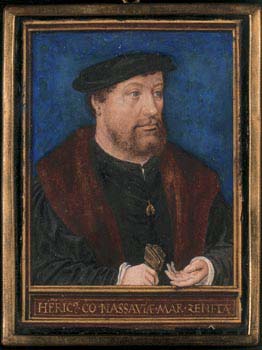 ate) and the princes Orange of Burgundy. (In the 13th century Nassau inheritance was divided between brothers Otto and Walram. The Dutch ruling family relates to Otto, in Walram originated Grand Dukes of Luxembourg line.) The families of Orange and Nassau bound to each other in 1515, by the marriage of Hendrik III of Nassau-Breda and Claudia Châlon-Orange. Their son René was the first Earl of Nassau and Prince of Orange, but he died young (killed in a battle), leaving no child behind. His estate was inherited in 1544 by his cousin William I of Nassau-Dillenburg line. Wilhelm decided to keep also the name “Orange” and since then his dynasty became the Orange-Nassau. He was not the first stadtholder in the family, because this office (the governor of Holland and Zealand) had been already hold by Hendrik III. On the picture: Hendrik III.
ate) and the princes Orange of Burgundy. (In the 13th century Nassau inheritance was divided between brothers Otto and Walram. The Dutch ruling family relates to Otto, in Walram originated Grand Dukes of Luxembourg line.) The families of Orange and Nassau bound to each other in 1515, by the marriage of Hendrik III of Nassau-Breda and Claudia Châlon-Orange. Their son René was the first Earl of Nassau and Prince of Orange, but he died young (killed in a battle), leaving no child behind. His estate was inherited in 1544 by his cousin William I of Nassau-Dillenburg line. Wilhelm decided to keep also the name “Orange” and since then his dynasty became the Orange-Nassau. He was not the first stadtholder in the family, because this office (the governor of Holland and Zealand) had been already hold by Hendrik III. On the picture: Hendrik III.
The progenitor
The proper progenitor of the Dutch royal family is William of Orange (1533 – 1584), nicknamed “The Silent” – he got this nick after a following event. When he was walking home back after some meeting, a man (dressed like a nobleman) asked him where he could meet him and his friends (the counts Egmont and Hoorne) because he wanted to join the rebellion. The prince did not trust him and asked: “Can you keep it silent?” The man replied: “Yes”. So the prince replied: “I also” and walked away without another word exchange.
He was born in Dillenburg in Germany (Hesse), and had been tied with the Netherlands only by his cousin René’s estate. Wilhelm was initially associated with the Habsburgs, ruling over the Netherlands in 16th century, which made him a stadtholder of Holland, Zealand and Utrecht. His ambitions, however, went far beyond serving to Charles V and Philip II, so he joined the Dutch nobility opposition. In the open armed struggle against the Spaniards he engaged himself in 1568 after the outbreak of the so-called Eighty Years’ War. Over the years, according to his military successes, his position and popularity highly grew up. In 1576 he became an admiral, the chief military commander and stadtholder of Holland and Zealand, in 1577 – Utrecht and Brabant. His political career reached the top in 1577, when after the ceremonial entrance to Brussels he became known as the “father of the fatherland.” After deposition of Philip II in 1581 the prince had chance to gain the power over the whole Northern Netherlands, but his illustrious career was stopped by Balthazar Gerard, a fanatical supporter of Philip II, who killed him at his house (it was the first political murder by shot). In spite of his intense political life Wilhelm I was married 4 times and had 16 children, including one illegitimate. On the picture: prince Wilhelm I.
Netherlands only by his cousin René’s estate. Wilhelm was initially associated with the Habsburgs, ruling over the Netherlands in 16th century, which made him a stadtholder of Holland, Zealand and Utrecht. His ambitions, however, went far beyond serving to Charles V and Philip II, so he joined the Dutch nobility opposition. In the open armed struggle against the Spaniards he engaged himself in 1568 after the outbreak of the so-called Eighty Years’ War. Over the years, according to his military successes, his position and popularity highly grew up. In 1576 he became an admiral, the chief military commander and stadtholder of Holland and Zealand, in 1577 – Utrecht and Brabant. His political career reached the top in 1577, when after the ceremonial entrance to Brussels he became known as the “father of the fatherland.” After deposition of Philip II in 1581 the prince had chance to gain the power over the whole Northern Netherlands, but his illustrious career was stopped by Balthazar Gerard, a fanatical supporter of Philip II, who killed him at his house (it was the first political murder by shot). In spite of his intense political life Wilhelm I was married 4 times and had 16 children, including one illegitimate. On the picture: prince Wilhelm I.
Dutch national anthem “Wilhelmus van Nassauwe” is related to him, also the country’s motto “Je maintendre”, colors of the flag and orange as unofficial color of the Dutch.
Stadtholders
To understand all the ups and downs of William’s successors it is necessary to be aware of the specific of the country in which they had to perform the service of the stadtholder. It was a country of strong parliamentary traditions, shaped by centuries of existence of the Provincial-States and General-States, but on the other side monarchist tendencies never expired. It must be remembered that even after establishing the Republic of the Seven United Provinces (1579 – 1795) nobody seriously imagined there ruling without a sovereign. For all these aspects came another – the growing middle class and the bourgeoisie wanted to have a real impact on power.
Thus, the period of the Republic of the Seven United Provinces was a period of constant disputes about the nature of power, its scope and powers. The main opponent sides were the parliamentary orientations (the center of it was Holland and its grand pensionary) and the supporters of the House of Orange. A manifestation of this conflict was a dispute over the scope of authority of the stadtholder. The office was celebrated only in the provinces, but focusing several of them with the military command in one hand gave much power. Traditionally, this function was given to the current head of the family Orange-Nassau. And the family, by its wealth and connections to European royal courts, represented quite a royal splendor. When the parliamentary option prevailed, stadtholder’s power was limited, but their importance grew up in times of danger. And there was no shortage of them in subsequent centuries.
The first serious dispute came in the time of William’s son Maurice. When the mission of Robert Dudley (sent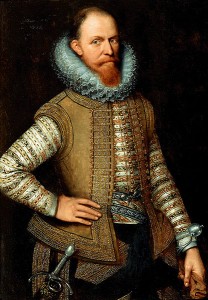 from England by Elizabeth I) failed, Maurice gradually collected the stadt-holder functions of Holland and Zealand (1585), Overijsel (1590) and Gelderland (1591), which gave him great political power. This power was reinforced by the command over the army and the fleet of the Republic of the Seven United Provinces. That was disliked much by the parliamentary opposition, usually focused around the grand-pensionary of Holland. The conflict between the two centers of power inflamed attitude to the truce with Spain in 1609 – Maurice sought to continue the war, while the grand pensionary Jan Oldenbarnevelt wanted peace, serving the interests of the bourgeoisie. During this time an ideological dispute arose between the so-called Arminians (proclaiming the superiority of the state) and gomarists (supporting sovereignty). The one who won was Maurice whose power even had strengthened. In the picture: Maurice.
from England by Elizabeth I) failed, Maurice gradually collected the stadt-holder functions of Holland and Zealand (1585), Overijsel (1590) and Gelderland (1591), which gave him great political power. This power was reinforced by the command over the army and the fleet of the Republic of the Seven United Provinces. That was disliked much by the parliamentary opposition, usually focused around the grand-pensionary of Holland. The conflict between the two centers of power inflamed attitude to the truce with Spain in 1609 – Maurice sought to continue the war, while the grand pensionary Jan Oldenbarnevelt wanted peace, serving the interests of the bourgeoisie. During this time an ideological dispute arose between the so-called Arminians (proclaiming the superiority of the state) and gomarists (supporting sovereignty). The one who won was Maurice whose power even had strengthened. In the picture: Maurice.
After his death in 1625 the stadtholder office went to his half-brother F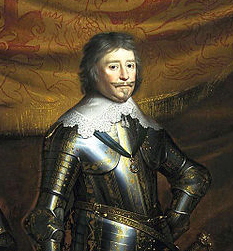 rederick Henry, a talented military commander, whose position was strengthened by his victories over the Spaniards (after the resumption of the war in 1629). Frederick Henry Prince of Orange was the first one granted by hereditary of the office of the stadtholder (1631), he also got extended power. He could for instance make some decisions on its own, without the consent of the States-General. His son William, the forthcoming William II, married Mary Stuart, a daughter of the English king Charles I.
rederick Henry, a talented military commander, whose position was strengthened by his victories over the Spaniards (after the resumption of the war in 1629). Frederick Henry Prince of Orange was the first one granted by hereditary of the office of the stadtholder (1631), he also got extended power. He could for instance make some decisions on its own, without the consent of the States-General. His son William, the forthcoming William II, married Mary Stuart, a daughter of the English king Charles I.
On the picture: Frederick Henry.
An ambitious and power-hungry Wilhelm II (since 1647) tried to make his position strong by force and even made a n military attempt but luckily for his opponents he died unexpectedly in 1650. His government discouraged oligarchy, the so-called Regents, so much that they decided not to appoint the next stadtholder. The years 1650 – 1672 became the first period without a stadtholder, called “the period of real freedom”. From the mid-17th century the political scene in the Republic was dominated by Holland and its grand pensionary, Jan de Witt, who was very reluctant to the House of Orange-Nassau. De Witt hated the House of Orange so much, that he agreed to include in the treaty with England (after the 1st war with England in 1653) “The act of exclusion” (Acte de seclusie), depriving Orange family the possibility of collecting functions of the stadtholder and commander-in-chief of the armed forces. The act was repealed in 1660, after restoration of the Stuart dynasty, overthrown by Oliver Cromwell. On the picture: Wilhelm II.
n military attempt but luckily for his opponents he died unexpectedly in 1650. His government discouraged oligarchy, the so-called Regents, so much that they decided not to appoint the next stadtholder. The years 1650 – 1672 became the first period without a stadtholder, called “the period of real freedom”. From the mid-17th century the political scene in the Republic was dominated by Holland and its grand pensionary, Jan de Witt, who was very reluctant to the House of Orange-Nassau. De Witt hated the House of Orange so much, that he agreed to include in the treaty with England (after the 1st war with England in 1653) “The act of exclusion” (Acte de seclusie), depriving Orange family the possibility of collecting functions of the stadtholder and commander-in-chief of the armed forces. The act was repealed in 1660, after restoration of the Stuart dynasty, overthrown by Oliver Cromwell. On the picture: Wilhelm II.
Next wars with England led to a gradual increase of the significance and popularity of the Orange dynasty – again it turned out that in state of emergency the Netherlands sought help in this family. Demands to give the son of William II, William (of cours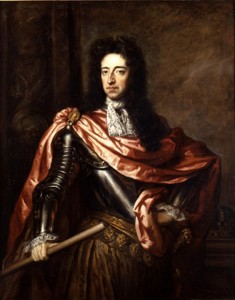 e), political position of his ancestors appeared. To prevent it the States-General passed in 1667 a special edict, confirming the ban of focusing in one hand the stadtholder office and the command of the armed forces (land and sea). But in 1670, when the anti-Republic coalition of England and France was formed, 21-year-old William III received a temporary appointment as commander in chief, and already in 1672 he became the stadtholder of Holland and permanent chief of the army and navy of the Republic. His biggest opponent, John de Witt, was in the same year brutally murdered with his brother (the murder and desecration of their corpses are the most infamous event in the history of the Netherlands). On the picture: William III.
e), political position of his ancestors appeared. To prevent it the States-General passed in 1667 a special edict, confirming the ban of focusing in one hand the stadtholder office and the command of the armed forces (land and sea). But in 1670, when the anti-Republic coalition of England and France was formed, 21-year-old William III received a temporary appointment as commander in chief, and already in 1672 he became the stadtholder of Holland and permanent chief of the army and navy of the Republic. His biggest opponent, John de Witt, was in the same year brutally murdered with his brother (the murder and desecration of their corpses are the most infamous event in the history of the Netherlands). On the picture: William III.
Talented as a politician, military commander and organizer, as well as exhibiting great personal courage, William III successfully defied the united forces of France and England, for what Holland, Zealand, Gelderland, Utrecht and Overijsel passed heredity of the stadtholder by the House of Orange-Nassau. States-General added to it hereditary command of the army and navy. The political career of William III had not been stopped by it however. Married since 1677 with Mary Stuart, a daughter of the Duke of York, in 1688 he helped to overthrow the Catholic King James II of England, after which he sat on the throne of England. He became one of the most powerful rulers of Europe at the time, and in the Netherlands he had much more power than his predecessors. He died childless in 1702 and the line of direct descendants of William I expired with his death.
Frisian line
The death of William III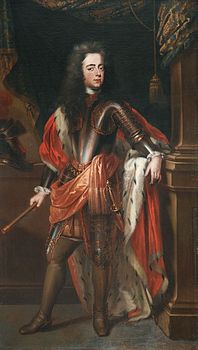 initiated the second stadtholderless period in the Republic, which lasted until 1747. Although the late king appointed a successor – John William Friso, a descendant of brother of William I and the stadtholder of Friesland – but he was too young to be a stadtholder of 5 provinces. And did not live long enough to get these offices. At the age of 24 Friso drowned in 1711 in the river Hollands Diep, leaving behind a daughter and an unborn son, later William IV. Despite the modest number of children he left, with John William Friso are related all current ruling families in Europe (the Netherlands, Belgium, Denmark, Norway, Spain, Sweden, United Kingdom, Liechtenstein, Luxem-bourg, Monaco), and in the past also royal families of Russia, Austro-Hungary Bulgaria, Greece, Romania, Italy, Mexico, Yugoslavia and many German principalities.
initiated the second stadtholderless period in the Republic, which lasted until 1747. Although the late king appointed a successor – John William Friso, a descendant of brother of William I and the stadtholder of Friesland – but he was too young to be a stadtholder of 5 provinces. And did not live long enough to get these offices. At the age of 24 Friso drowned in 1711 in the river Hollands Diep, leaving behind a daughter and an unborn son, later William IV. Despite the modest number of children he left, with John William Friso are related all current ruling families in Europe (the Netherlands, Belgium, Denmark, Norway, Spain, Sweden, United Kingdom, Liechtenstein, Luxem-bourg, Monaco), and in the past also royal families of Russia, Austro-Hungary Bulgaria, Greece, Romania, Italy, Mexico, Yugoslavia and many German principalities.
On the picture: John William Friso.
THe return of the House of Orange to the stadtholder office took place in 1747, during the War of the Austrian Succession. When the French army invaded the territory of the Republic, the pro-Orange party managed to entrust power to William IV (Friso’s son), who w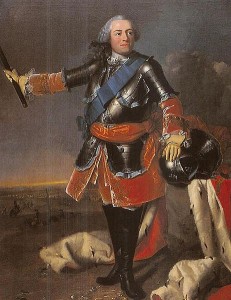 as the first representative of Orange-Nassau dynasty who became the stadtholder of all seven provinces, as well as commander of the fleet and army. What’s more, States-Provincial and States-General recognized the stadtholder office as hereditary, even by the female line. The new ruler of the Netherlands was blessed with power, of which his predecessors could only dream on, but unhappily he turned out to be weak and conservative and he reformed the state not according to common demands (including the granting of political rights to the lower bourgeoisie). He died in 1751 after only three years of the rule. His successor, William V (because of his age he took the stadtholder office no earlier then in in 1766), turned out to be no better. He was not very intelligent, stubborn and pedantic.
as the first representative of Orange-Nassau dynasty who became the stadtholder of all seven provinces, as well as commander of the fleet and army. What’s more, States-Provincial and States-General recognized the stadtholder office as hereditary, even by the female line. The new ruler of the Netherlands was blessed with power, of which his predecessors could only dream on, but unhappily he turned out to be weak and conservative and he reformed the state not according to common demands (including the granting of political rights to the lower bourgeoisie). He died in 1751 after only three years of the rule. His successor, William V (because of his age he took the stadtholder office no earlier then in in 1766), turned out to be no better. He was not very intelligent, stubborn and pedantic.
On the picture: William IV.
Meanwhile, since the 70s and 80s of the 18th century in the Northern Netherlands became popular the ideas of the Enlightenment and the Montesquieu ideas of the separation of powers (legislative, executive and judicial). Following it democratic tendencies grew up, what caused increasing aversion to the House of Orange, which was called a tyrant. Anti-Orange attitude, represented by the so-called patriots, was so strong, that it led to significant limiting of the stadtholder power, removing the coat of arms from military flags, and in 1784 the States-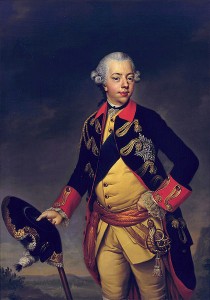 Provincial of Holland banned even performing “Wilhelmus van Nassauwe” song and wearing the orange. There were some bloody clashes between patriots and Orangists. The Republic of the Seven United Provinces stood at the brink of civil war. William V collapse was prevented in 1787 by intervention of the King of Prussia, who was his brother in law. The lost stadtholder competences were restored and inheritance of the stadtholder office ensured in the “Warranty Act” (imposed by Prussia and England), but it was already close to the end of the Republic of the Seven United Provinces. In 1795 revolutionary French army invaded the Republic and the Batavian Republic was established, which abolished the stadtholder office and inheritance of any of them. William V left to England. In 1799 he tried to regain power by force with the help of England, but the population of the Netherlands did not rush to help and the plan failed. On the picture: William V.
Provincial of Holland banned even performing “Wilhelmus van Nassauwe” song and wearing the orange. There were some bloody clashes between patriots and Orangists. The Republic of the Seven United Provinces stood at the brink of civil war. William V collapse was prevented in 1787 by intervention of the King of Prussia, who was his brother in law. The lost stadtholder competences were restored and inheritance of the stadtholder office ensured in the “Warranty Act” (imposed by Prussia and England), but it was already close to the end of the Republic of the Seven United Provinces. In 1795 revolutionary French army invaded the Republic and the Batavian Republic was established, which abolished the stadtholder office and inheritance of any of them. William V left to England. In 1799 he tried to regain power by force with the help of England, but the population of the Netherlands did not rush to help and the plan failed. On the picture: William V.
In exile William V gave up claims to the function of the stadtholder, being satisfied with compensation in the form of property in Germany. During the Napoleonic period he was more interested in enlarging his properties than in the situation in the Netherlands (which briefly became a kingdom); only when his German lands were confiscated by Napoleon in 1806 he renewed his interest in the Netherlands.
After Napoleon’s defeat at Leipzig in 1813, situation turned again in favor of the Orange dynasty. It was considered that the most appropriate form of government would be the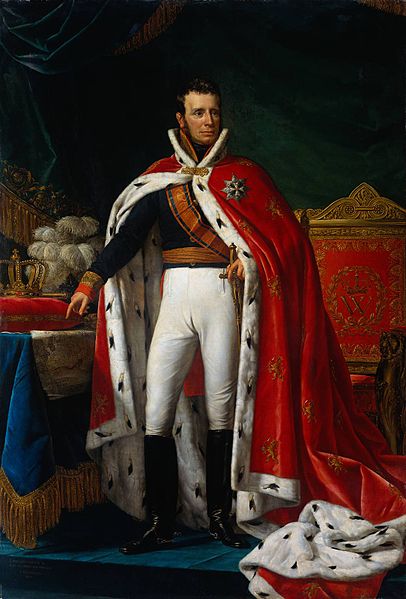 rule the House of Orange-Nassau, so the son of William V, William VI, had been invited to take power in the Northern Netherlands. The prince of Orange came to the Netherlands on November 30, 1813 already as a sovereign prince William I. Since 1814 he became a ruler of the Northern and Southern Netherlands. After the Congress of Vienna, on March 16, 1815 William I proclaimed himself king and he became also the Grand Duke of Luxembourg. And so began a new chapter in the history of Orange-Nassau dynasty, chapter, which continues to this day. One thing has to be noticed – Dutch rulers don’t relate to divine origin of authority (no religious aspect in it) and a Dutch sovereign is inaugurated rather than crowned.
rule the House of Orange-Nassau, so the son of William V, William VI, had been invited to take power in the Northern Netherlands. The prince of Orange came to the Netherlands on November 30, 1813 already as a sovereign prince William I. Since 1814 he became a ruler of the Northern and Southern Netherlands. After the Congress of Vienna, on March 16, 1815 William I proclaimed himself king and he became also the Grand Duke of Luxembourg. And so began a new chapter in the history of Orange-Nassau dynasty, chapter, which continues to this day. One thing has to be noticed – Dutch rulers don’t relate to divine origin of authority (no religious aspect in it) and a Dutch sovereign is inaugurated rather than crowned.
On the picture: king William I.
Kings
Just as it was in the Republic of the Seven United Provinces, also in the Netherlands constant disputes about the extent of the royal power were held. These disputes were influenced by democratic movements that took place in Europe (and resulted in the Spring of Nations), but also personal characteristics of successive rulers had some significance. The first of them, William I, the ruler of the United Kingdom of the Netherlands, had large power with a significant reduction of the States-General competence, which was stripped of legislative initiative. He was talented, well-educated and understood well economy, but he was also extremely stubborn and autocratic. His absolutist and awkward rule aroused deep resentment, what led in 1830 to the secession of Belgium, and in 1840 to serious limitation of the monarch power. Deeply committed to absolutism, William I could not bear his limited political position and abdicated. His decision was also influenced by personal reason – the king wanted to marry Henrietta Marry d’Oultremont, a lady-in-waiting of his deceased wife, Belgian and Catholic, what was absolutely unacceptable.
Interesting note:
The daughter of that ruler was famous Marianna of Orange, landowner in Lower Silesia and founder of the beautiful palace in Kamenz (Kamieniec Ząbkowicki). More on her in Lady from the Netherlands.
The next king, William II , experienced another limitation – he was deprived of the personal power but king’s prerogatives remained significant. Discussions on the subject were held since 1840, and changes were made in 1848 under the influence of the Spring of Nations, the revolutionary uprising, whose slogan was to increase the power of the people. Like his father, Wilhelm II was a conservative, but he could accept the inevitable changes and proceeded with caution. Fearing the revolution that swept the Bourbons in France, he said one morning that overnight he had changed from conservative to liberal. He was bisexual, had two wives, including the Tsar Alexander I’s sister Anna Paulowna, from which originates the name of one of the towns north of the Netherlands.
, experienced another limitation – he was deprived of the personal power but king’s prerogatives remained significant. Discussions on the subject were held since 1840, and changes were made in 1848 under the influence of the Spring of Nations, the revolutionary uprising, whose slogan was to increase the power of the people. Like his father, Wilhelm II was a conservative, but he could accept the inevitable changes and proceeded with caution. Fearing the revolution that swept the Bourbons in France, he said one morning that overnight he had changed from conservative to liberal. He was bisexual, had two wives, including the Tsar Alexander I’s sister Anna Paulowna, from which originates the name of one of the towns north of the Netherlands.
On the picture: king Wilhelm II.
His son, William III, was reactionary ruler and he tried to regain the lost power (such as appointment and dismissal of ministers). His actions led to resignation of several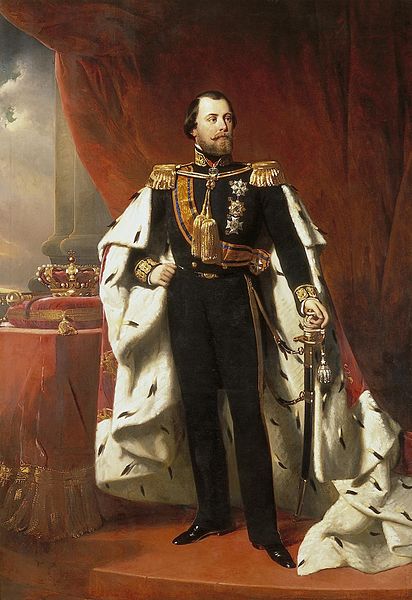 governments and weakening the States-General. This autocracy created strong dissatisfaction. Privately, he was interested only in the military and his marriage to Sophia Württemberg, a woman intellectually far above him, was very unsuccessful (queen even said that her life ended on the day of the wedding). For his immoral behavior he was called “gorilla” and “the greatest debauchee of the age”. The couple had three sons, but none of them survived the father. The throne was inherited by Wilhelmina, a daughter of the second marriage with Emma of Waldeck and Pyrmont, 41 years younger of her husband but quite happy with William III. At that ended the era of kings and queens era began. On the picture: king William III.
governments and weakening the States-General. This autocracy created strong dissatisfaction. Privately, he was interested only in the military and his marriage to Sophia Württemberg, a woman intellectually far above him, was very unsuccessful (queen even said that her life ended on the day of the wedding). For his immoral behavior he was called “gorilla” and “the greatest debauchee of the age”. The couple had three sons, but none of them survived the father. The throne was inherited by Wilhelmina, a daughter of the second marriage with Emma of Waldeck and Pyrmont, 41 years younger of her husband but quite happy with William III. At that ended the era of kings and queens era began. On the picture: king William III.
Queens
The 20th century was, in the Kingdom of the Netherlands, the ladies century. And they turned out to be women of strong characters who could get their own ways. At least when it came to matters of the heart.
Born in 1880, Wilhelmina Helena Pauline Maria van Oranje-Nassau became queen in 1898 at the age of 10 ye ars, but she took power when she was 18 years old (after the regency of her mother, Queen Emma). Her life was not easy, but also she – hard, stubborn and very conservative (she was against Olympic Games in Amsterdam assuming them a pagan thing) – was not an easy person, which did not prevent gaining great popularity with the Dutch. Her childhood was extremely sad because on the royal court she was surrounded only by adult people and had virtually no contacts in the outside world. She described it later in her autobiography “Lonely, but not alone” (up today the only autobiography written by a monarch). In her personal life she was also unlucky, because she had to marry Prince Heinrich von Meklemburg-Schwerin, who was cheating on her and was an alcoholic. The birth of the couple’s only child, Princess Juliana, after nine years of marriage was considered a miracle. On the picture: queen Wilhelmina in a coronation gown.
ars, but she took power when she was 18 years old (after the regency of her mother, Queen Emma). Her life was not easy, but also she – hard, stubborn and very conservative (she was against Olympic Games in Amsterdam assuming them a pagan thing) – was not an easy person, which did not prevent gaining great popularity with the Dutch. Her childhood was extremely sad because on the royal court she was surrounded only by adult people and had virtually no contacts in the outside world. She described it later in her autobiography “Lonely, but not alone” (up today the only autobiography written by a monarch). In her personal life she was also unlucky, because she had to marry Prince Heinrich von Meklemburg-Schwerin, who was cheating on her and was an alcoholic. The birth of the couple’s only child, Princess Juliana, after nine years of marriage was considered a miracle. On the picture: queen Wilhelmina in a coronation gown.
Wilhelmina had to rule at the time of the two world wars. During the second of them she was forced to leave the country (not intending it however) and go into exile to L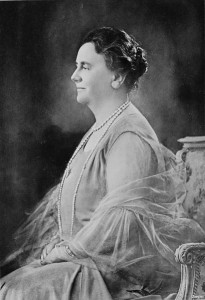 ondon, where she took the power, and even forced the dismissal of Prime Minister Dirk Jan de Geer, who was willing to make a deal with the Germans. The queen’s approach to Hitler is shown well by the fact that when in the 30s she was passing through the Third Reich by train, she refused to accept flowers from the Fuehrer. In exile she used to have regular speeches on Radio Orange to the Dutch in the Netherlands, and her speeches were very popular. Her picture in the occupied country was a symbol of resistance. After returning to the Netherlands in 1945 she ruled only for 3 years more and in 1948 she abdicated in favor of Juliana. She died in 1962. On her request the funeral was all in white, to symbolize moving into the realm of spirituality. She was the longest reigning monarch of the Netherlands. On her initiative was established the International Court of Justice in The Hague.
ondon, where she took the power, and even forced the dismissal of Prime Minister Dirk Jan de Geer, who was willing to make a deal with the Germans. The queen’s approach to Hitler is shown well by the fact that when in the 30s she was passing through the Third Reich by train, she refused to accept flowers from the Fuehrer. In exile she used to have regular speeches on Radio Orange to the Dutch in the Netherlands, and her speeches were very popular. Her picture in the occupied country was a symbol of resistance. After returning to the Netherlands in 1945 she ruled only for 3 years more and in 1948 she abdicated in favor of Juliana. She died in 1962. On her request the funeral was all in white, to symbolize moving into the realm of spirituality. She was the longest reigning monarch of the Netherlands. On her initiative was established the International Court of Justice in The Hague.
On the picture: queen Wilhelmina in 1942.
Juliana Louise Emma Maria Wilhelmina of Orange-Nassau was born in 1909, and her birth was welcomed in the Netherlands with great joy, because it prevented the takeover of the throne by the German bra nch of the Nassau family. Her childhood was happy, because Queen Wilhelmina wanted to give her daughter all she lacked herself – the maternal warmth and contact with ordinary people. Raised in the simplicity, Juliana liked to ride through the streets on a bike, what created the joke that the Netherlands is a “monarchy on two wheels”. This kind of behavior brought her a lot of popularity. The Queen was an educated woman and even a doctor of political science. In 1937 she married the German Prince Lippe-Biesterfeld Bernhard, what for the threat of war by the Third Reich was not received by the Dutch well. (Read about their honeymoon in Poland in Royal visits). The couple had 4 daughters: Beatrix, Irene, Margaret and Mary. (Irene married Spanish Catholic what led to protests in the Netherlands and deprived her of the right to the throne – old ghosts of religious animosity were revived.) Juliana’s oath.
nch of the Nassau family. Her childhood was happy, because Queen Wilhelmina wanted to give her daughter all she lacked herself – the maternal warmth and contact with ordinary people. Raised in the simplicity, Juliana liked to ride through the streets on a bike, what created the joke that the Netherlands is a “monarchy on two wheels”. This kind of behavior brought her a lot of popularity. The Queen was an educated woman and even a doctor of political science. In 1937 she married the German Prince Lippe-Biesterfeld Bernhard, what for the threat of war by the Third Reich was not received by the Dutch well. (Read about their honeymoon in Poland in Royal visits). The couple had 4 daughters: Beatrix, Irene, Margaret and Mary. (Irene married Spanish Catholic what led to protests in the Netherlands and deprived her of the right to the throne – old ghosts of religious animosity were revived.) Juliana’s oath.
Juliana reigned for 32 years and abdicated in 1980 to Beatrix for health reasons. The Dutch liked this direct queen much, but during her reign there were a few glitches, which almost led to her earlier abdication. When Princess Margaret was threatened by blindness, Juliana succumbed to the influence of a charlatan Greet Hofmans, which began to influence politics, which even led to the resignation of the government. Then there was the scandal of bribes being received by Prince Bernard. Queen Juliana abdicated on the day of her 71 birthday and died in 2004 aged 94 years. Like all the members of Orange-Nassau dynasty, starting with William I of Orange, Juliana came to rest in the Nieuwe Kerk in Delft.
The Dutch liked this direct queen much, but during her reign there were a few glitches, which almost led to her earlier abdication. When Princess Margaret was threatened by blindness, Juliana succumbed to the influence of a charlatan Greet Hofmans, which began to influence politics, which even led to the resignation of the government. Then there was the scandal of bribes being received by Prince Bernard. Queen Juliana abdicated on the day of her 71 birthday and died in 2004 aged 94 years. Like all the members of Orange-Nassau dynasty, starting with William I of Orange, Juliana came to rest in the Nieuwe Kerk in Delft.
On the photo: Juliana on her bicycle.
Since 1980 up to 2013 the queen was Juliana’s daughter Beatrix Wilhelmina Armgard van Oranje-Nassau (born 31 January 1938). Beatrix abdicated on April 30, 2013 for her oldest son Willem-Alexander.
Queen Beatrix abdication
Like her mother, Beatrix is well educated – she studied at University of Leiden sociology, law and history, and holds a PhD in law. She is talented in art and her favorite pastime is sculpting. The Dutch affectionately call her Trix and have respect for her, but in comparison with her mother she is more restraint in dealing with people and pays more attention to the royal image, which is a subject of care of a small group of professionalists. Pictures of queen Beatrix.
Following her mother Juliana, Beatrix a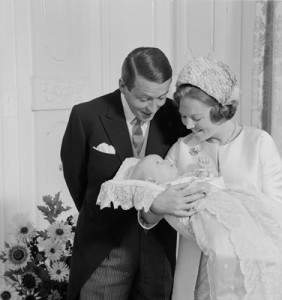 lso made a controversial choice of her husband, who was the 12 years older German diplomat Claus van Amsberg. His pre-war membership of the Hitler Youth and service in the German armed forces (he became even an American prisoner of war) led to deep protests of the Dutch society. During their wedding protests in Amsterdam had place, and someone even thrown up a candle smoke to the royal carriage. But prince Claus managed however soon to get acceptance of the Dutch, who sincerely mourned his death in 2002. It was the first royal marriage in Europe, in which one of the spouses had no royal blood in his veins. On the photo: queen Beatrix and prince Claus with Willem-Alexander.
lso made a controversial choice of her husband, who was the 12 years older German diplomat Claus van Amsberg. His pre-war membership of the Hitler Youth and service in the German armed forces (he became even an American prisoner of war) led to deep protests of the Dutch society. During their wedding protests in Amsterdam had place, and someone even thrown up a candle smoke to the royal carriage. But prince Claus managed however soon to get acceptance of the Dutch, who sincerely mourned his death in 2002. It was the first royal marriage in Europe, in which one of the spouses had no royal blood in his veins. On the photo: queen Beatrix and prince Claus with Willem-Alexander.
The royal wedding of Beatrix and Claus.
The royal couple had three sons, namely: the present king Willem-Alexander, Johan-Friso (died in 2013) and Constantijn.
After Queen Beatrix abdication the era of queens has ended for a while. But the Dutch consider the time in wich the “lady’ rules” the best period in the history of the Kingdom of the Netherlands.
Presenting new king by Princess Beatrix / photo: Eppo Notenboom
The king
The new king, Willem-Alexander Claus George Ferdinand Amsberg, is a graduate of the University of Leiden, where he also studied history. He is very interested in the management of water and for this reason he has been appointed to the World Commission on Water of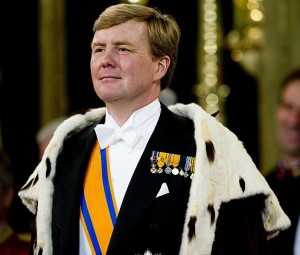 21st Century. Under the assumed name of “Van Buren” Willem-Alexander sometimes carried out inspections of dykes and shafts. In his youth he lieked to have fun so the Dutch called him “The prince Beer”. Since February 2002 the king is married to Maxima Zorreguieta Cerruti (mixed Spanish, Portuguese and Italian blood). She is a former employee of a bank in Argentina.
21st Century. Under the assumed name of “Van Buren” Willem-Alexander sometimes carried out inspections of dykes and shafts. In his youth he lieked to have fun so the Dutch called him “The prince Beer”. Since February 2002 the king is married to Maxima Zorreguieta Cerruti (mixed Spanish, Portuguese and Italian blood). She is a former employee of a bank in Argentina.
“According to family tradition”, this also proved to be a controversial choice because Maxima’s father was a minister of agriculture in the government of military dictator Jorge Videla and therfore had not been invited to the wedding ceremony. Happily Maxima, who now is queen Maxima, has been accepted by the Dutch. The couple has three daughters: Catherine-Amalia, Alexia and Ariane.
The royal family, July 17, 2020 / Beeld: © RVD / Wesley de Wit
It is interesting that Maxima deprived Willem-Alexander of the rights to the throne of England, which he had as a direct descendant of the oldest daughter of the King George II’s daughter. English succession law prohibits inheriting the English throne by a person married to a Catholic, and Maxima is still a Catholic.
The successor
Next in line to the throne is Catherine Amalia (born in 2003), whose full title is Her Royal Highness the Hereditary Princess of Orange, Catharina-Amalia Beatrix Carmen Victoria, Princess of the Netherlands, Princess of Orange-Nassau. Commonly called just Amalia.
In the photo: Catherine Amalia, 2019 / Beeld: ©RVD – Z.M. de Koning
Renata Głuszek
Read also: Monarchy and Willem and Maxima
Photos: Wikipedia, www.koninklijkhuis.nl, Eppo W. Notenboom

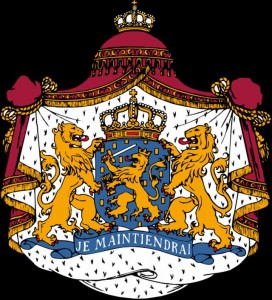

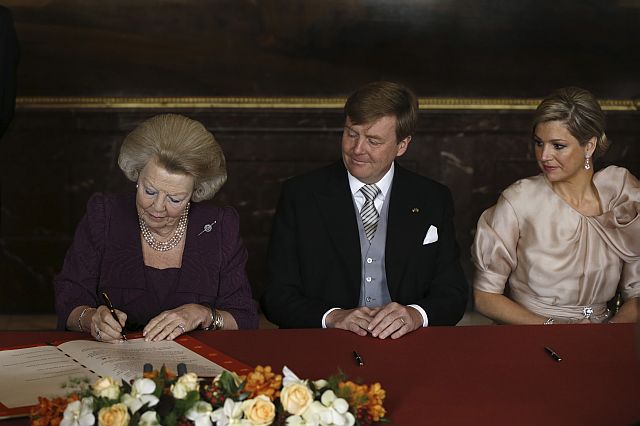
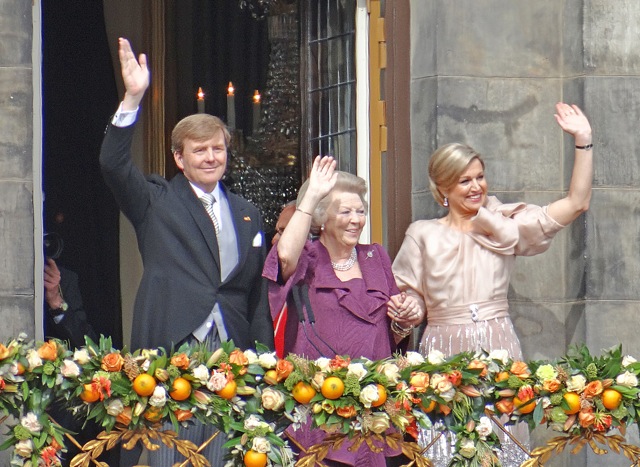


Many thanks for the text so dear for me since myself am interested in the origin (genealogical roots)of my family name Oranski.
I enjoying reading about the House of Orange. I do genealogy research, and have notes that were written many, many years ago stating our line WEBBER goes back to the House of Orange.
Would like to know more about finding that connection.
Thank You
I am very sorry but I can’t helpin this matter.
Renata